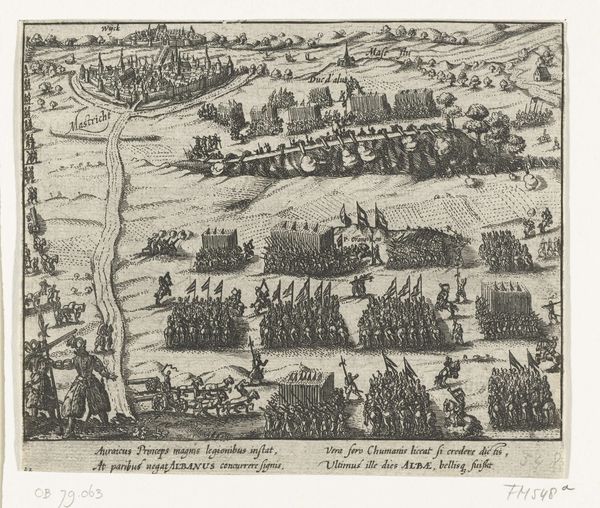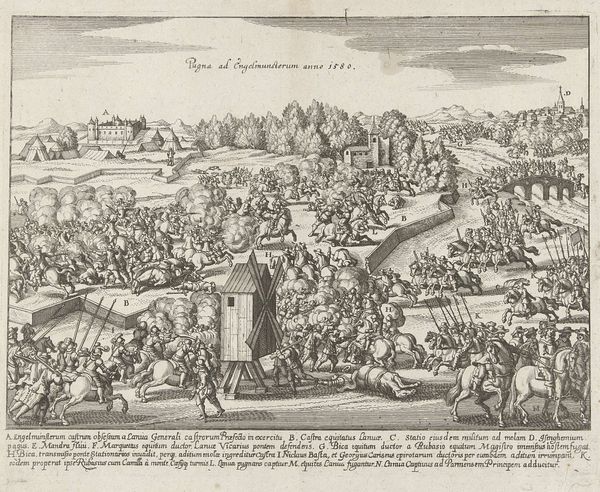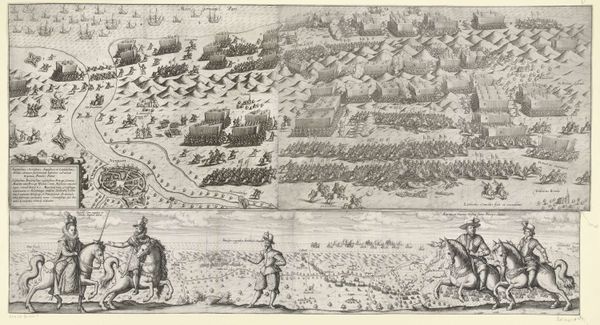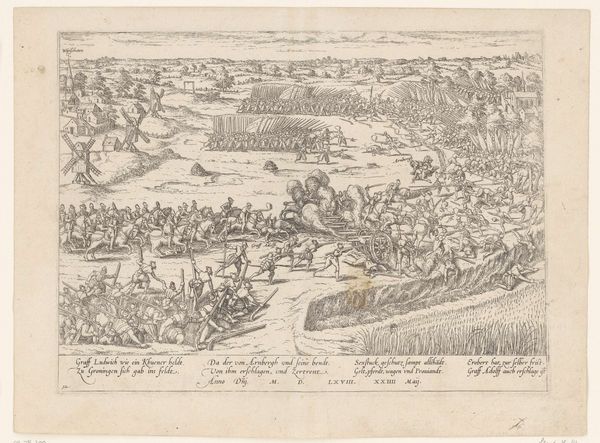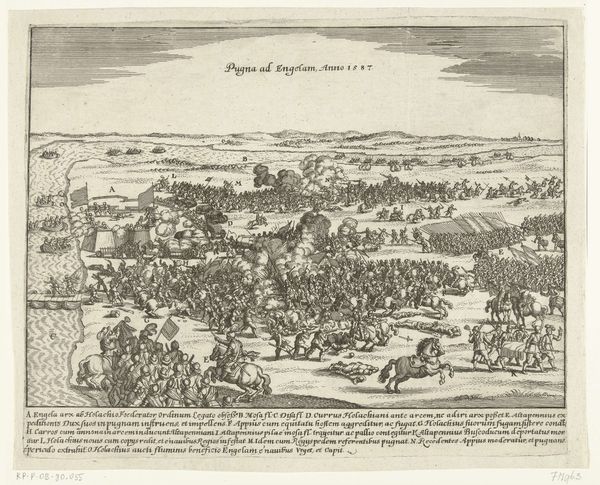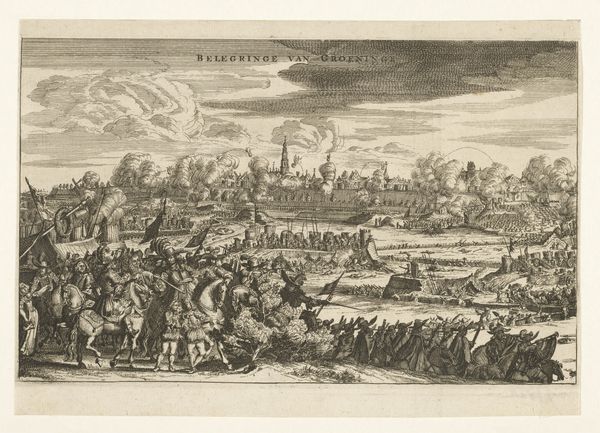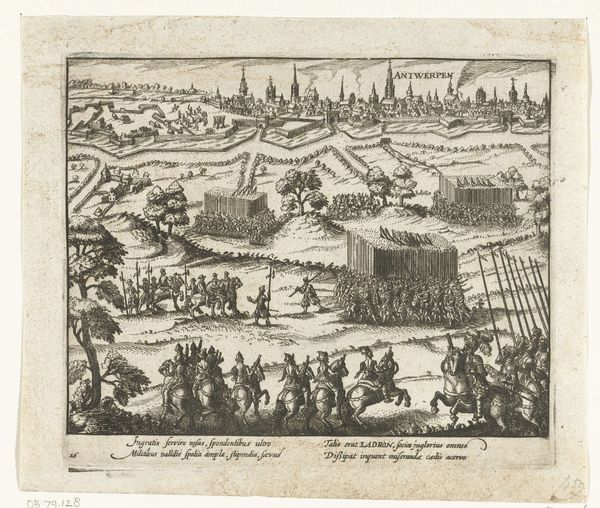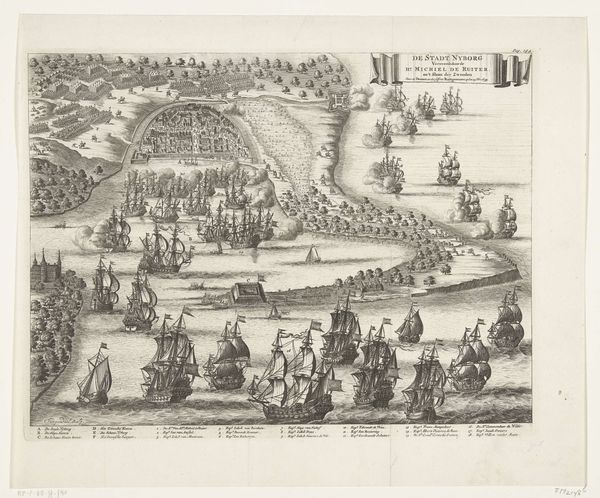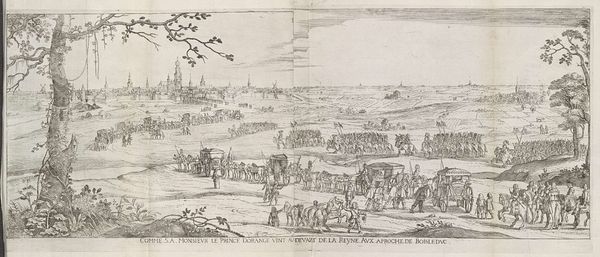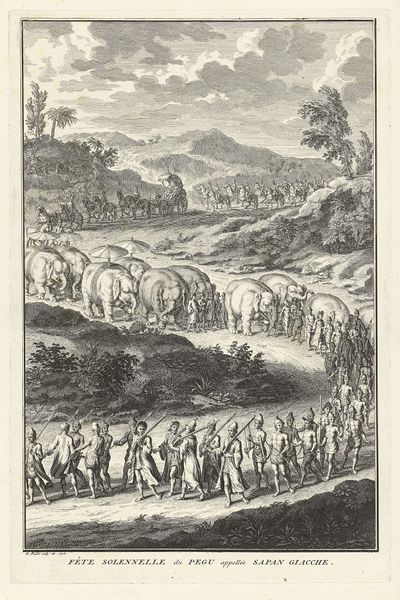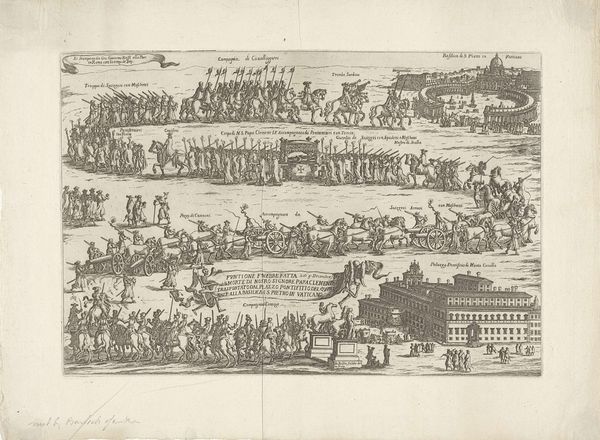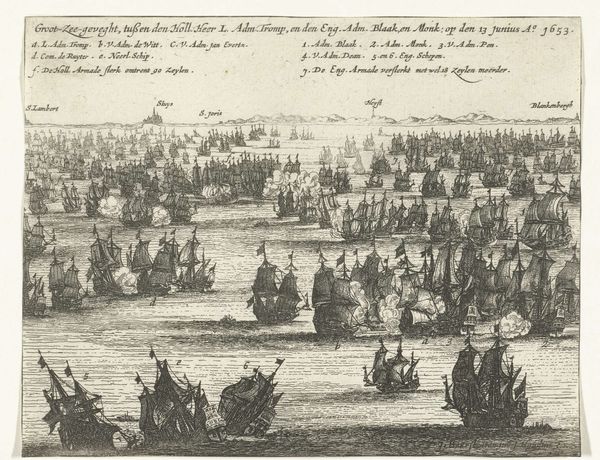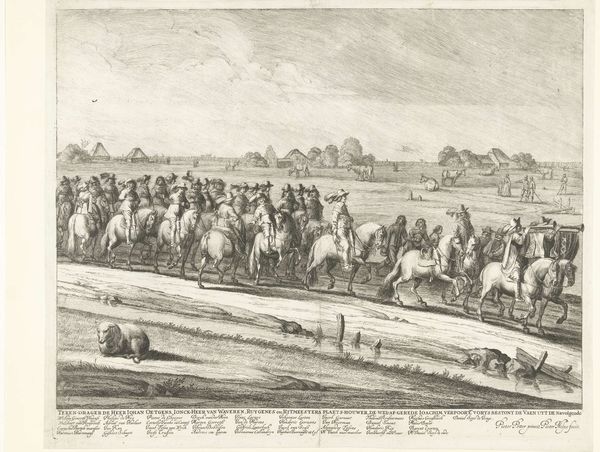
print, engraving
#
baroque
#
dutch-golden-age
# print
#
cityscape
#
history-painting
#
engraving
Dimensions: height 485 mm, width 570 mm
Copyright: Rijks Museum: Open Domain
Editor: So, this is Melis Jansz Kock's "Entry of William III into The Hague, 1691," created as an engraving. The sheer number of figures and carriages creates an overwhelming sense of scale. How would you interpret this complex composition? Curator: Initially, one is struck by the stratification, the organization into distinct bands. Observe how the artist utilizes linear perspective to compress space, creating a flattened, almost map-like representation of the event. The procession itself spirals inward, a vortex of movement contained within a highly ordered framework. Notice how the eye is drawn to the foreground, specifically the repeating shapes of horses and figures, which creates rhythm but also emphasizes uniformity. Editor: It's interesting that you focus on the flattening effect. Did this choice of perspective serve a specific purpose? Curator: Precisely! Consider the inherent properties of engraving. Its reliance on line, its capacity for minute detail, lends itself to portraying structured events. This flattening allows for clarity, ensuring that each element within the procession retains a degree of visibility, crucial for communicating power and order. The clear inscription aids understanding but also stands apart visually as a separate plane of visual information, no? Editor: I see. It's not just about representing the event but emphasizing the organization and control behind it. Thank you. Curator: Indeed, by dissecting its visual components, we gain insight into the artist's conscious decisions and what the work sought to represent.
Comments
No comments
Be the first to comment and join the conversation on the ultimate creative platform.
